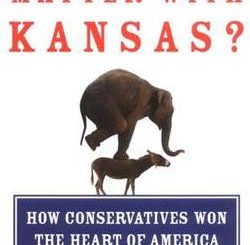We don’t need irrational old weights and measures back

Yesterday the government announced that merchants were to be allowed to sell food and other products solely using imperial weights and measures again, a practice that was banned some years ago when we were in the European Union and which has been on some Brexiteers’ and right-wing papers’ wish lists for some time with a handful of market stall holders becoming known as “metric martyrs” for refusing to use grams and getting fined. The Labour MP Jess Philips tweeted last night that she had never had complaints from constituents about the issue and those who really can’t get their heads around metric must be very old as metric has been around in the UK since the mid-60s and decimal currency (replacing the old system of 20 shillings to the pound and twelve pence to the shilling) since 1971. Yet it is one of a number of petty annoyances that the government will want to deal with now that its hand is freed by no longer having membership of the EU. (More at Byline Times from a former trading standards inspector.)
Most British people have some knowledge of imperial measures, and some products are commonly sold in old measures, such as milk and beer in pints (albeit with the metric quantity on the bottle, often down to four decimal places) and road distances in yards and miles. However, it’s doubtful that most people understand the whole system. Grams and meters are easy to calculate; it’s a simple sum to add two such weights or distances together and converting large to small measures is a matter of adding or removing zeroes or moving a decimal point. The same is not true when there are twelve inches to the foot, three feet to the yard, 22 yards to the chain, 10 chains to the furlong and eight of those to the mile (and three miles to the league). So there are 1,760 yards to the mile, while with metres, the conversion to kilometres is simple. Weight measurements (commonly but not officially used for weighing people) had similar inconsistency: a pound was 16 ounces, while a stone is 14 pounds; a hundredweight is 112 pounds or eight stone. These measures seem arbitrary and are completely inconsistent; adding more than the simplest quantities together is difficult and error-prone.
The complexity of these measures becomes obvious when you look at descriptions and dimensions of things made in countries where they are still used. Look at an American guitar maker’s website, for example, and you will find scale lengths, body depths and widths and nut widths given in inches plus halves and quarters down to sixteenths and thirty-seconds of an inch (a third of an inch is called a barleycorn, but nobody seems to use that; a ‘thou’ or a ‘mil’ is a thousandth of an inch, but nobody thought to invent a measure for a reasonable fraction of an inch). European builders give all these measurements in millimetres which are easy to read and uncomplicated to add and subtract.
A few years ago an imperial measures advocate wrote a letter to a broadsheet (probably the Observer as it’s the one I read) claiming that the nature of number was binary rather than decimal. Binary is base 2, in which every place is a power of two rather than ten: instead of units, tens, hundreds, thousands etc. from right to left, it is units, twos, fours, eights, sixteens. Powers of two are conspicuous by their rarity in imperial measurements; apart from in fluid volume where a quart is two pints and a gallon is eight, powers of two appear only three times in weight (a pound being 16 ounces and an ounce being sixteen drachms or drams, therefore a pound being 256 drams, while a hundredweight is eight stone) and twice in length (a hand, commonly used to measure horse height, being four inches and a mile being eight furlongs). The rest of the numbers are random.
If anything, Britain should have pushed further with metrication and faced down the so-called martyrs and their media cheerleaders. While converting all the road signs to kilometres might have been too expensive (although other countries, such as Ireland, have managed it albeit gradually), vehicle and bridge heights in metres would have avoided a whole lot of confusion and damage. There have been many incidents where a truck driver struck a bridge because his vehicle’s height was given in metres and the stated height of the bridge in metres was higher than the height in feet and inches. Vehicles here use a confusing mixture, some (especially trailers) in metres and others in feet and inches, while filling station canopy clearances are invariably in metres. Xenophobic tabloids have been able to falsely claim that metrication is a case of Europe imposing “their ways” on us, when in fact metric is the standard around the world and has been for many years. Apparently the only countries that mostly use imperial measures are Burma and Liberia; the USA uses a variant on imperial and some other countries, particularly in the Commonwealth, use a mixture.
To allow the sole use of imperial measures would benefit nobody except a handful of ageing market traders who cannot be bothered to learn a new system, or will not because they regard it as foreign, as well as merchants who would use it as cover to push up prices. To younger people, it would cause nothing but confusion. Metric is an internationally agreed-on system, it is logical and it is easy to use. Imperial is none of these things. It should be left in the past.



